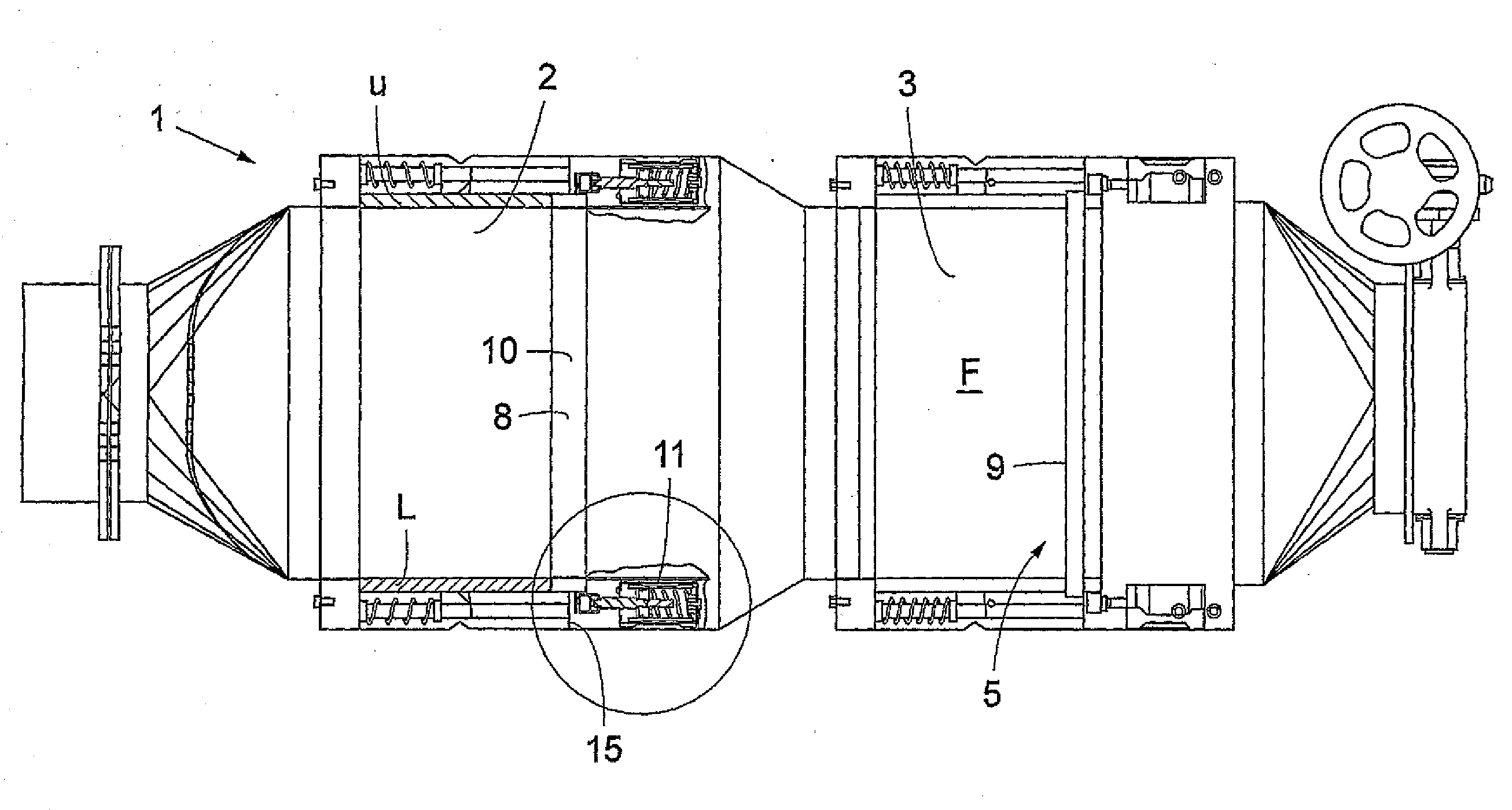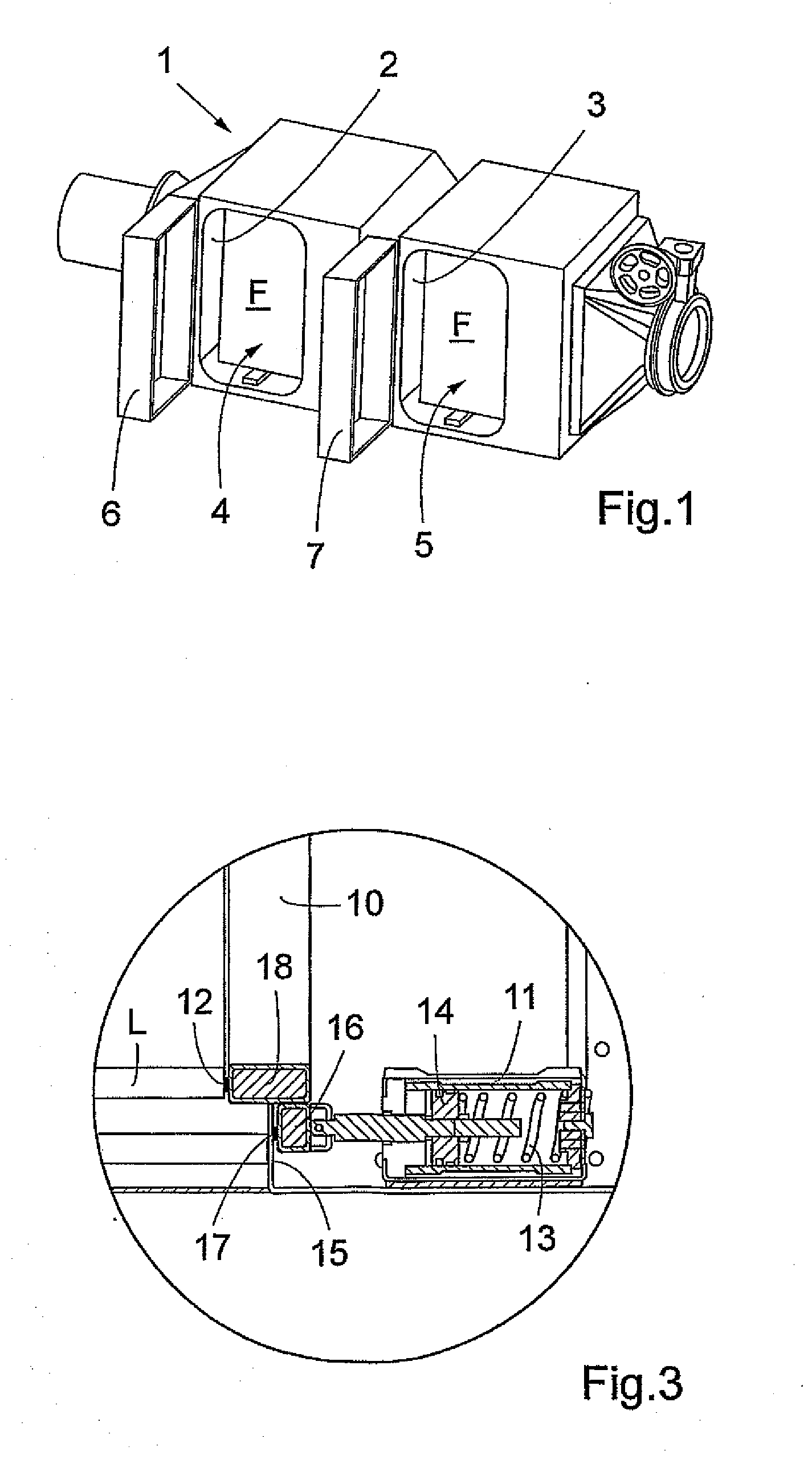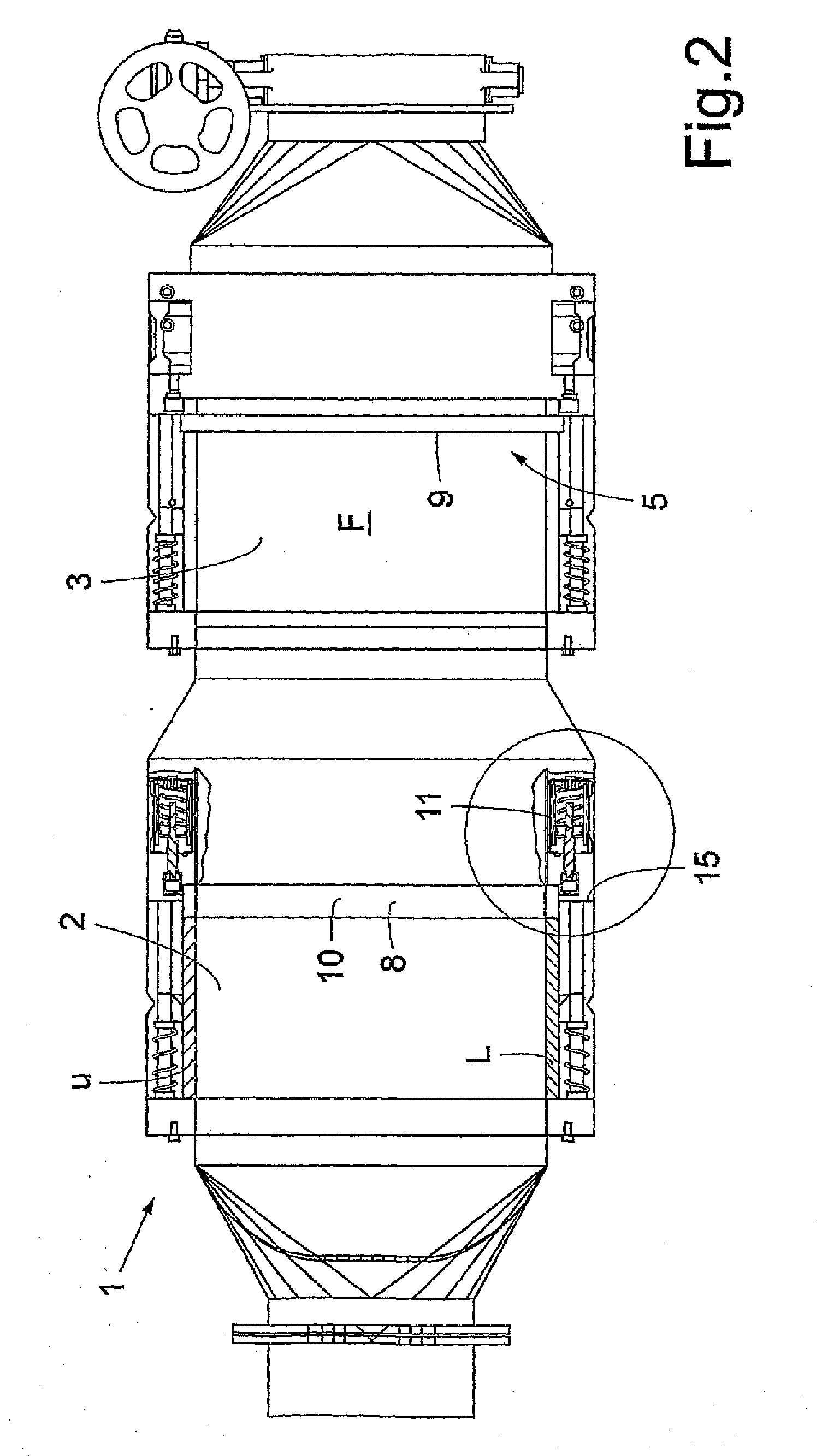Air filter housing with sealing means
- Summary
- Abstract
- Description
- Claims
- Application Information
AI Technical Summary
Benefits of technology
Problems solved by technology
Method used
Image
Examples
Embodiment Construction
[0010]In FIG. 1, a schematic perspective view of an air filter housing 1 according to a preferred embodiment of the present invention is shown. In the preferred embodiment, the housing includes two filter chambers 2,3 in each of which an air filter unit F is disposed. Access to filter chambers 2,3 is gained by access openings 4,5. These access openings are closable by doors 6,7 shown in their open position in FIG. 1.
[0011]In FIG. 2, the filter housing 1 is shown in a partially sectioned plan view seen from the side of the housing 1 containing the access openings 4,5. The doors 6,7 are not shown in FIG. 2. As can be seen in FIG. 2, each filter unit F comprises a circumferential wall surrounding the filter media and ensuring that air passing through the filter unit will not sidewise leak out of the filter unit but pass through the unit from one end to the other, i.e. in the longitudinal direction of the filter housing 1. In FIG. 2 the upper U and lower part L of this circumferential w...
PUM
 Login to View More
Login to View More Abstract
Description
Claims
Application Information
 Login to View More
Login to View More - R&D
- Intellectual Property
- Life Sciences
- Materials
- Tech Scout
- Unparalleled Data Quality
- Higher Quality Content
- 60% Fewer Hallucinations
Browse by: Latest US Patents, China's latest patents, Technical Efficacy Thesaurus, Application Domain, Technology Topic, Popular Technical Reports.
© 2025 PatSnap. All rights reserved.Legal|Privacy policy|Modern Slavery Act Transparency Statement|Sitemap|About US| Contact US: help@patsnap.com



